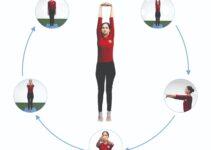Dandasana meaning
Dandasana (Staff Pose) is a sitting yoga pose precursor for many sitting, standing, prone and supine yoga poses. If one sees the anatomy of this pose, it reveals that dandasana plays a vital role in body alignment.
I have discussed the significance of Dandasana with one of the yoga experts of the Art of Living, Bengaluru, wherein he has mentioned that following the procedure of this yoga pose step by step helps in many ways, viz. strengthening the back, suitable for shoulders and arms, give an alignment to your knees and ankles. Besides these, the yoga teacher highlighted how Dandasana plays a vital role in practising other yoga poses. Here, we will discuss Dandasana’s simple steps, benefits, precautions and contraindications.

Dandasana facts
- Dandasana is a Sanskrit word called Staff Pose in English.
- It is pronounced as ‘dun-DAHS-anna’.
- Pose type: Seated yogasana
- Targets: Lower and upper body. Hamstrings, calves
- It comprises two words, ‘danda’, which means stick, and asana, ‘ yoga pose’.
- The word Dandasana is used first in Sritattvanidhi.
- Level: Beginner
- Anatomy: It is suitable for the muscles, viz., lower back, hips and pelvis.
Dandasana benefits
- It gives the body a proper alignment.
- Stretching is experienced at the chest, shoulder and back regions.
- It improves posture, especially the rear portion of the body.
- It is beneficial for spine health.
- It is suitable for your legs, knees and ankles.
- Gives adequate stretching to hamstrings and calves.
Dandasana procedures step-by-step
- Sit on a flat surface by extending your leg forward.
- Keep your arms straight beside your hips.
- Keep your legs straight and stretched, having a small gap between your heels.
- Make sure that your spine is vertically stretched upwards.
- Keep your palms on the ground and try to give a suitable alignment to your upper body and legs.
- This is Dandasna.
- Do normal breathing and maintain the pose as long as you can.
Beginner’s tips
- The beginner experiences issues while practising the yoga pose as the thighs and hips are directly in touch with the ground, which is generally lacking with beginners.
- They should use a towel or blanket under their thighs or hips.
- To keep the legs on the ground, stretch your toes outward by slightly pushing your heels back.
Dandasana variation
- If one wants to practice it perfectly, it is better to sit supporting the wall.
- If there are problems with hips or thighs, one can keep a blanket below it.
- In case of knee pain, a folded blanket should be used.
- If your hand doesn’t reach the ground, use blocks.
- If somebody finds it difficult to straighten the legs, perform it with a few folded legs.
Preparatory poses
- Vajrasana
- Tadasana
- Parvatasana
- Padmasana
Counter poses
- Supt Vajrasana
- Stick yoga pose
- Ustrasana
Dandasana precautions
- Legs shouldn’t be rotated outward.
- It shouldn’t be performed fast.
- Do some warm-up exercises before practising this yoga pose.
Dandasana contraindications
- Back injury
- Knee pain
- Wrist injury
- Surgery
- High blood pressure
- Severe weakness





